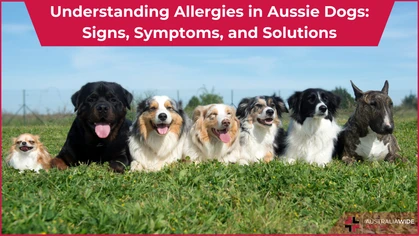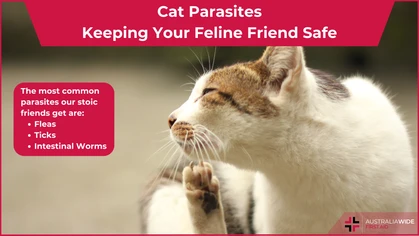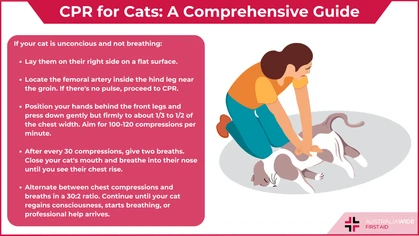Australian Tick Identification Chart

Pets
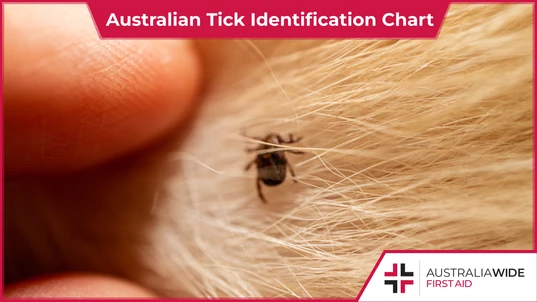
Australian ticks come out in force during the warmer months of summer. Ticks can carry poisonous toxins and bacteria that are especially harmful to dogs. As such, knowing how to prevent and remove ticks is important.
Australian ticks come out in force during the warmer months of summer, so knowing how to prevent and remove ticks is important, particularly for your pet dogs. The paralysis tick, the bush tick and the brown dog tick are three common ticks in Australia that can cause serious illness in your dog. It is important to check for ticks regularly on dogs and remove them as soon as possible. Here is an Australian Tick Identification Chart so you know what ticks to look out for in the coming months that might cause tick paralysis in your beloved dogs. To learn more about preventing and managing a range of insect bites, book a first aid course with Australia Wide First Aid today.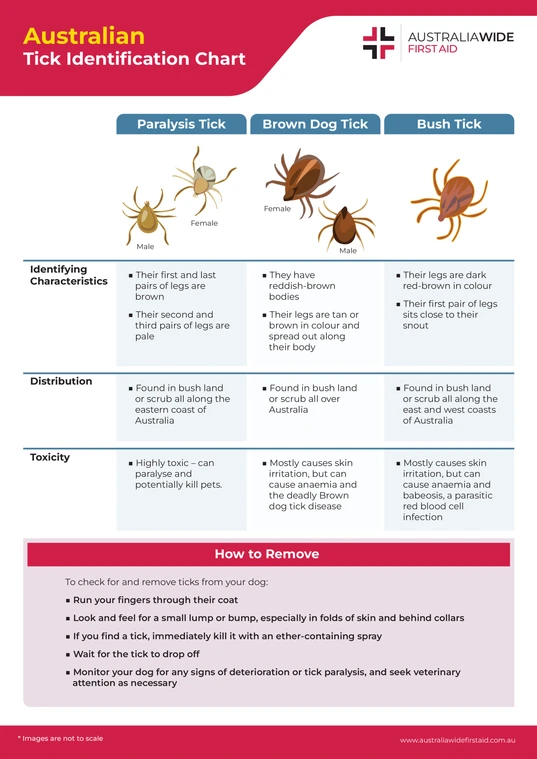
Australian Tick Identification Chart
What are ticks and how do they attach themselves to humans and dogs?
Ticks are small eight-legged parasitic arachnids that attach and feed on the blood of various animals and humans. There are about 70 different types of ticks in Australia. Ticks like to hang out in grass, on tree branches, logs, leafy debris, and uncontrolled vegetation. When a suitable human or animal host passes, they drop on and find an optimal spot to feed. Ticks enjoy feeding in protected, soft skin areas. As such, you may need to play a bit of intentional hide-and-seek to find them. With hooks in their mouth that act as mini harpoons, ticks pry the skin open, anchor on and gorge themselves on blood before they fall off. If found and not fully removed, the head may remain lodged in the skin and continue to transmit pathogens. For this reason, ticks are widely considered an annoying insect. Head to our Resource Library for more information on other annoying insects in Australia.What is a paralysis tick?
The paralysis tick (Ixodes holocyclus) is one of three common species of ticks in Australia. It carries a potentially lethal toxin for dogs and is found all along the eastern coast of Australia. The paralysis tick is identified by its dark brown first and last pairs of legs, in contrast to its beige middle pairs. Aptly named, the paralysis tick can cause tick paralysis in dogs. Make sure you check and remove the tick as quickly as possible. Be sure to monitor dogs for signs of paralysis.Looking to get you First Aid knowledge up to date?
We run certified First Aid courses throughout all major Acustralian citys. Find a location near you.
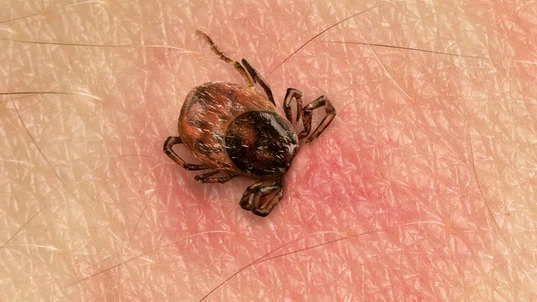
Paralysis tick (Ixodes holocyclus)
What are signs of tick paralysis?
Even with the best treatment, tick paralysis in dogs can be fatal, with a best case scenario of days or weeks of recovery. Should you notice any of these signs in your dogs, be sure to check them and seek immediate veterinary help:- Weakness in hind legs that may progress to front legs
- Grunting, laboured or rapid breaths
- Retching or vomiting
- Severe breathing problems
- Change in bark
- Coughing
- Collapsing or death
What is the bush tick?
The Australian bush tick can be fatal to dogs, passing on a parasitic red blood cell infection called babeosis that can result in anaemia, a lack of oxygen in the blood. In most cases, these ticks are harmless or cause skin irritation. The bush tick can be found all along the east and west coasts of Australia. Bush ticks are known to feed predominantly on cattle, so be sure to check your dog regularly if you live or visit near cattle. A bush tick has short mouth parts and tiny spurs on their head.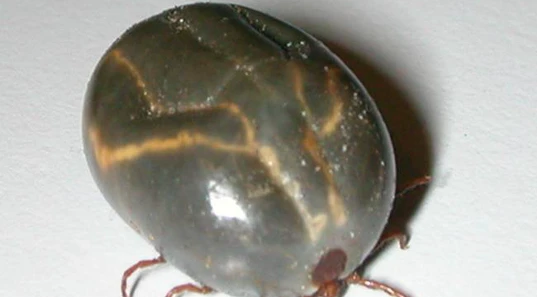
Bush Tick (Haemaphylsalis longicornis)
What is the brown dog tick?
The brown dog tick can transmit bacteria that causes the potentially fatal brown dog tick disease, erhlichia canis. The brown dog tick is common all over Australia and is identified by its reddish brown colour and eyes. Heavy infestations of brown dog ticks can result in excessive blood loss and anaemia. In most cases, these ticks are harmless or cause skin irritation.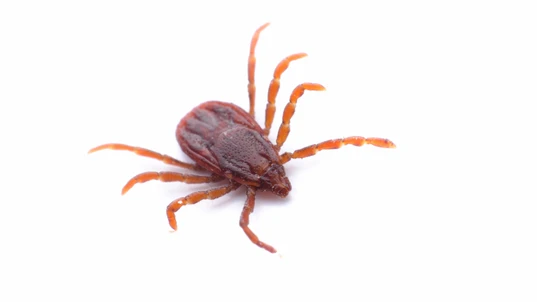
Brown Dog Tick (Rhipicephalus sanguineus)
How to check your dog for tick bites and what to do if you suspect one?
A tick bite is a small lump or bump that may be a little swollen, itchy and red. When a tick is still attached it may appear as a mole or a skin tag. Checking and removing ticks is the best way to protect your dogs:- Run your fingers through the coat
- Look and feel for a small lump or bump, especially in folds of skin and behind collars
- Use vet products such as spot ons or tick collars
- Immediately kill the tick where it is using an ether-containing spray (for suitable products, refer to your pharmacist)
- Wait for the tick to drop off
- Monitor the dog
- If the dog shows any signs to tick paralysis, seek veterinary attention immediately

Tick bites can also be dangerous for humans, as they can trigger allergic reactions ranging from the mild (itching and localised swelling) to the severe (anaphylaxis). Tick bites can also transmit infections like Lyme Disease, which is characterised by fever, fatigue, and muscle pain.
What about tick bites in humans?
Tick prevention is just as important for humans as it is for animals. The most serious medical condition from a tick bite is an allergic reaction. Tick bites can also transmit infections like Lyme Disease, the symptoms for which can include fever, fatigue, and muscle and joint aches. For more information about avoiding tick bites and tick removal in humans, please head to our Resource Library.Final thoughts
Ticks are out in force during the summer months and can carry poisonous toxins and bacteria that are especially harmful to dogs. Allergic reaction is the most serious medical condition associated with ticks in humans. Check your pet and yourself for ticks regularly if you are walking, camping, or gardening in dense foliage or cattle-prone areas. Remove the tick as soon as possible and monitor for any allergic reaction in humans, or tick paralysis in dogs. And to learn how to identify, prevent and manage different bites and stings, book a First Aid course with us today.
Originally published at
https://www.australiawidefirstaid.com.au/resources/australian-tick-identification-chart
as part of the Australia Wide First Aid Articles Library
